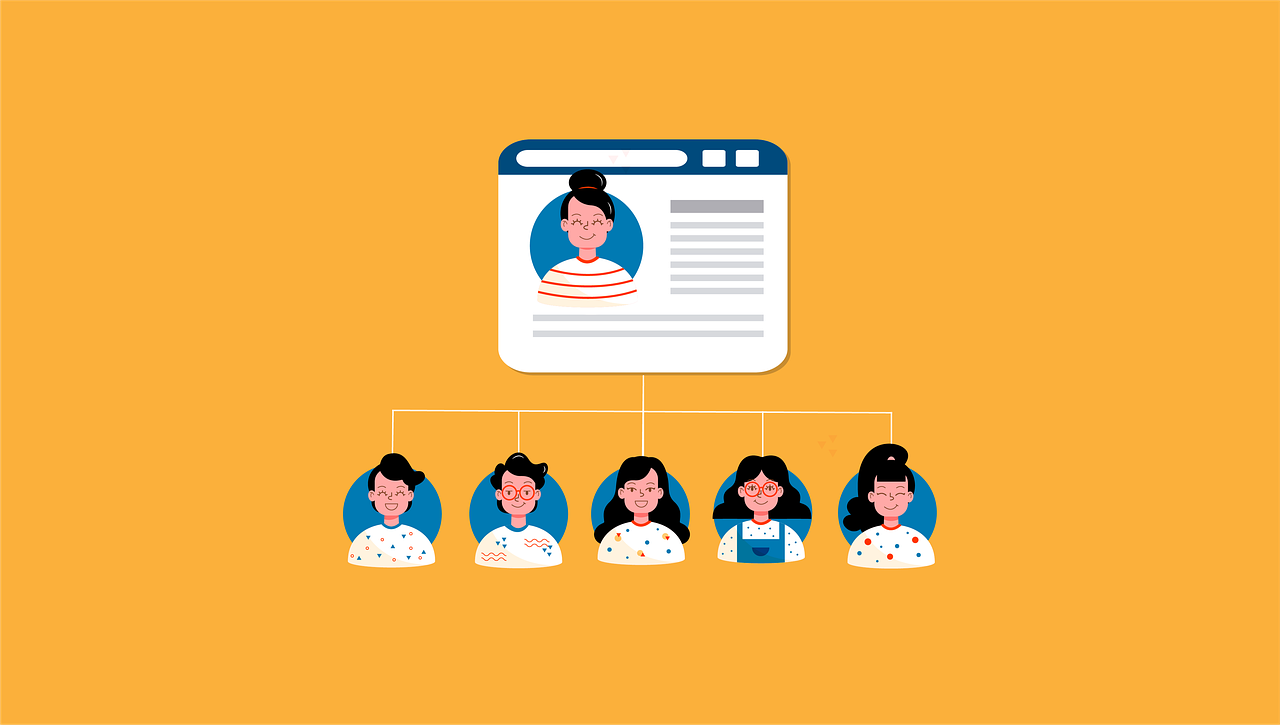Mapping Student Personas To Higher Ed Funnels

Knowing how prospective students are interacting with your higher ed team is great. Knowing what these students want – and what they need – is great too. But what if you could anticipate what a target audience wants before that first crucial “hello?”
Mapping student personas to higher ed funnels is like setting the stage scene before the actors arrive, only in this case the actors are incoming prospective students. By creating assets for fictional students in your funnel, you can ensure actual incoming students gain instant access to what they want, when they want it, in formats they prefer.
Related: How to Fit Unibuddy Into Your Higher Ed Marketing, Admissions, and Recruitment Programs
To help get you started on this process, we’ve put together some points to consider when mapping student personas to your higher ed funnels:
Understand each step of the higher ed student journey
According to Studyportals, there are six steps an average prospective student takes from initial exploration of higher ed brands to stepping foot on your campus. Understanding the needs of each of these steps, and how they apply to your own higher ed funnel, can help you identify and create student personas which match each stage.
The six general steps of the higher ed student journey are:
1. Discover
At this step, prospective students are at the beginning of their higher ed journey. They might be aware of what they want to study and are beginning to conduct research on available programs.
2. Shortlist
Prospective students at this step have identified a group of higher ed programs which meet their initial needs. They have not committed to any school at this point and are weighing the pros and cons of each before deciding where to apply.
3. Apply
Once a shortlist is confirmed, prospective students begin to send out applications to their higher ed programs of choice. Many students might send multiple applications out and remain uncommitted to a single school before they receive letters of acceptance.
4. Commit
Once a prospective student is accepted to a higher ed program, they need to decide where they want to commit and begin the process of enrollment. Multiple letters of acceptance may be issued at this stage and they need to make a final decision which program fits best with their academic goals – or which don’t.
5. Prepare
Even after accepting a letter of admission, summer melt rates tell us that there is still a considerable risk that students are still uncommitted to attending a particular school. Students at this stage must be continually engaged with and reminded of why a particular school remains the best fit for them.
6. Study
Upon arrival at campus, many students remain unconvinced that a chosen higher ed program is right for them. Retention efforts during their arrival period and crucial first year of study is paramount to maintaining student enrollment numbers through to graduation.
Analyze prospective student data at each step
As prospective students, and subsequently admitted students, move through the different steps in your higher ed funnel, their needs, wants, and expectations begin to change. While initial-stage students might want more general program-specific information, like whether a particular university or college program checks off the boxes of what they are interested in, subsequent lower funnel stage questions might revolve around more lifestyle questions, like how affordable housing is near campus or how easy it is to make friends.
Having available data for each step of your higher ed funnel can help you anticipate what sorts of questions students might have. For your higher ed team, this information can help you start to construct student personas for each funnel stage. Understanding where these student personas fit in each of your funnel stages is helpful for informing subsequent admissions, student recruitment, and higher ed marketing strategies.
Related: Digitizing higher ed decision-making for prospective students
Let say, for example, that you are experiencing melt issues with students who have accepted their application, but fail to show up on campus at the beginning of term. By analyzing available student data, you might notice students who were given an opportunity to engage with student ambassadors and their incoming classmates post-Commit stage were more likely to arrive ready to study in the fall. In addition to learning about the value of pre- and post-enrollment digital engagement forums you can apply this learning to student persona creation for this stage.
With the Unibuddy Platform, you gain access to anonymous student data pulled from the conversations which occur between prospective students and student ambassadors. Through a series of customizable filters and AI-infused insights, you can see specifically what students are talking about, asking about, or not asking about at each stage of your higher ed funnel.
Create student personas for each stage of your funnel
“Dave” is a prospective student who hails from the US Midwest who is interested in attending a university located along the Eastern Seaboard to study engineering. He knows he is looking for an engineering program which does not require a specialization to be declared in Freshman Year – and has prepared a shortlist of schools. “Dave” does not come from an affluent background and is looking to be the first in his family to enter into higher ed. He is worried about program cost, cost of living, and the distance he’d be traveling from home.
The above is an example of a basic student persona that a higher ed institution might create and map to the Shortlist Stage of their higher ed funnel. The student persona, a fictional prospective student named “Dave,” is pulled from conversational data which paints a picture of a hypothetical potential applicant to an engineering program hailing from the US Midwest.
Related: How to Map Students to Your Higher Ed Funnel
Armed with this student persona, a higher ed team can begin to investigate what sorts of themes, topics, or concerns, arise from conversations similar students at specific steps in their student journey. In the case of “Dave,” we know program cost, cost of living, and homesickness are determining factors for other similar students arriving at the Shortlist Stage.
By building out “Dave’s” profile further, and creating other student personas, this higher ed team can start to construct lists of questions “Dave” might ask and prepare answers for each stage of their higher ed funnel. When their team encounters a prospective student fitting the “Dave” persona, they can quickly gain access to the right information, answers, and predicted next moves according to funnel stage.
Create forums for specific personas
You’ve successfully recruited and admitted another year of prospective students for your higher ed institution. You know who they are, where they arrived in your funnel, and what sort of information they were looking for. You’ve created student personas for future recruitment, admissions and higher ed marketing teams to use and mapped them to your higher ed funnel. Great job!
To help remove heavy lifting for the future, and to help your team scale their outreach efforts, consider creating forums or groups built according to your student personas at each stage of your funnel. You might, for example, create a student persona asking about cost during their shortlist stage. By proactively creating a forum or group for this persona, you can direct future students asking about cost-related questions to join. In addition to enabling them to meet with other likeminded applicants with the same questions, your team can provide answers to this group en masse.
With Unibuddy Community, you can create and manage groups tailored to every student persona and funnel stage – including post-enrollment. These forum-style chat groups help prospective students, admitted students, and current students find and interact with their people. Messages can be sent and received in real-time, files can be exchanged, including PDFs, reminds can be posted for upcoming events, to help you scale your recruitment, marketing, admissions, and retentions strategies.
Provide student ambassadors with student personas
You know the power a student ambassador can have on facilitating the higher ed journey of a prospective student. In order to prepare them for these crucial connections, consider prepping them with full student persona profiles tailored to who they might be speaking with. By pulling data from existing conversations with current prospective students, you can prepare cheat-sheets and lists of common questions a resulting student persona might ask at a specific funnel stage. This ensures student ambassadors are fully prepared for what’s ahead before they say “hello.”
Related: How to Integrate Student Ambassadors Earlier in Your Higher Ed Funnel
Through AI-infused conversational insights tools, Unibuddy enables your team to pull short synopses of full student conversations and prepare lists of suggested questions according to what is discussed. In addition to helping you interact with students on an individual basis, the resulting trends and common topics can be built into your student personas for future use. All this data can be synced into your higher ed CRM.
Sign up for the latest news and events
More posts like this

How to Fit Unibuddy Into Your Higher Ed Marketing, Admissions, and Recruitment Programs
5th Jun 2023

How to Map Students to Your Higher Ed Funnel
26th May 2023

How to Integrate Student Ambassadors Earlier in Your Higher Ed Funnel
3rd May 2023